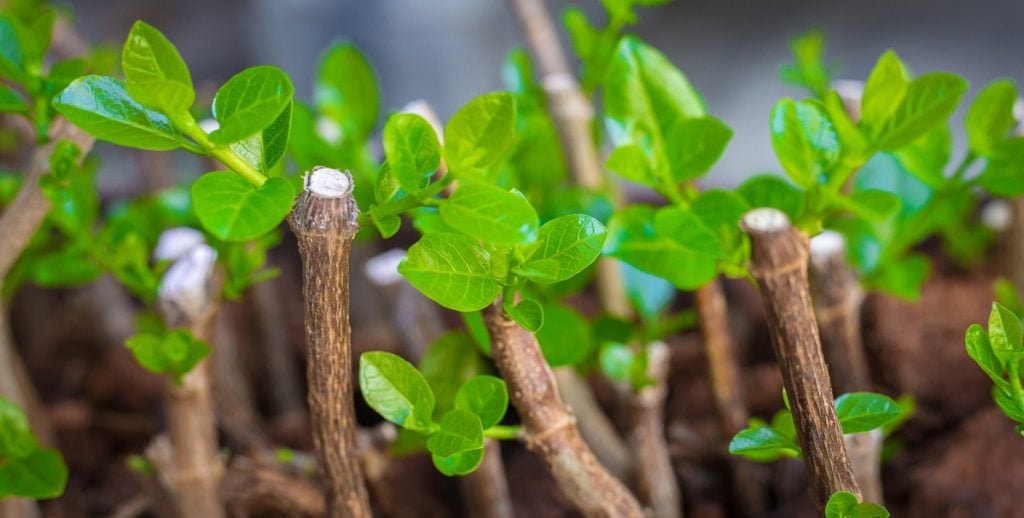Propagation is a rewarding, cost-effective way to create more of your favorite plants.
Learning the skills required to propagate plants is essential for people wanting to create diverse permaculture orchards or food forests.
In this guide, we look at what propagation is, the different methods of propagation and which plants you can propagate.
You will also discover the best and easiest propagation techniques and learn how to propagate plants using cuttings step by step.
What is Plant Propagation?
Plant propagation is the technique used to multiply plants by creating new plants from existing ones.
Propagation can be done in several ways using the seeds, roots, stems or leaves of plants.
Propagating plants is a rewarding way to create more of an ornamental plant you love or your favorite types of vegetables, herbs, berries and fruit trees.
The best thing about plant propagation is that it is inexpensive, and the few materials required are easy to find.
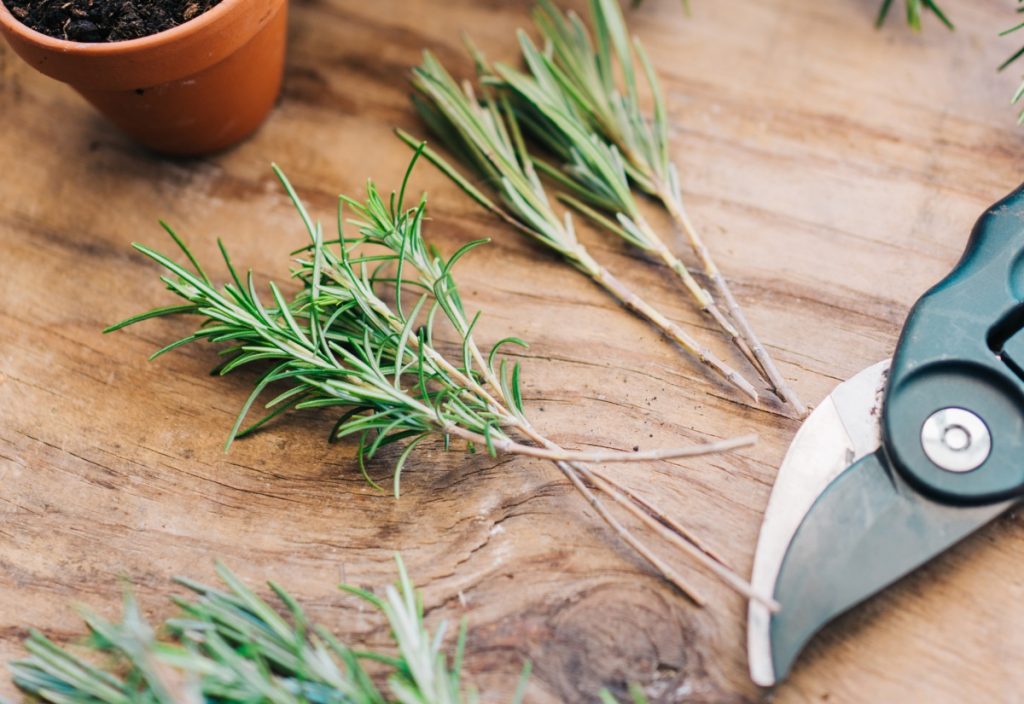
Can You Propagate Any Plant?
All plants need to reproduce and, in nature, use various methods such as seeds, runners, division, etc., to do so.
So, the answer is yes. You can use one of the many propagation techniques to propagate any plant.
However, just because you can, does not always mean you should.
In some instances, propagating a plant you have purchased may be illegal. Propagation is prohibited when the person who created the plant has patented it.
To check if a plant has been patented you can search google patents using the name of the plant.
Alternatively, if you don’t know the name of the plant, the University of Maryland has a plant patents image database of US plants that you can search.
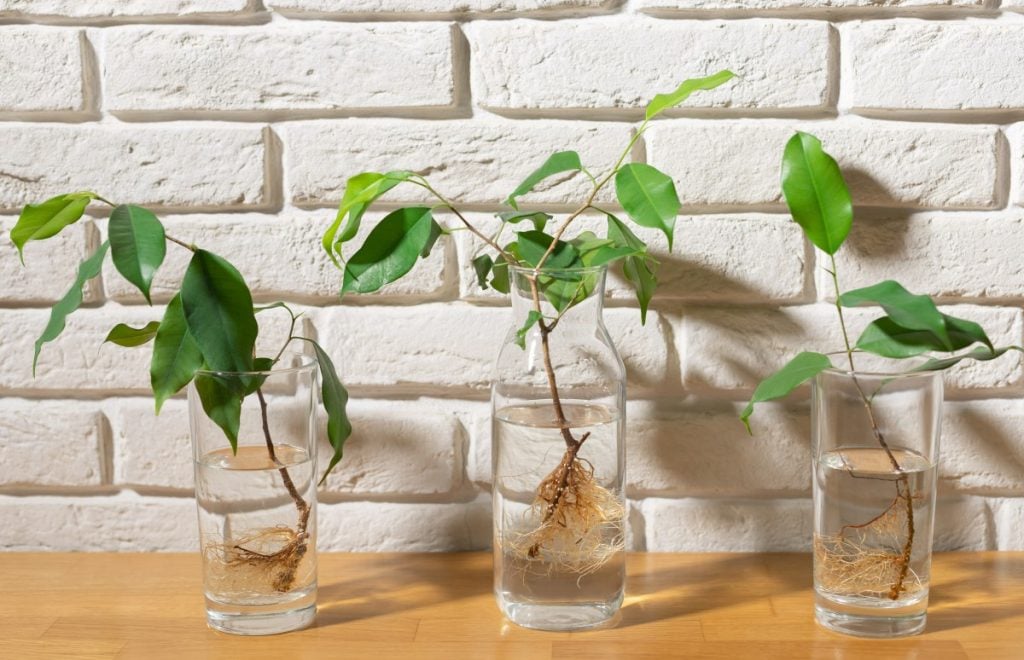
Different Methods of Plant Propagation
There are several propagation techniques. Many of them are used for commercial purposes and aim to achieve specific goals.
For example, to create disease-resistant plants, plants with unique characteristics or plants with increased productivity.
Plant propagation techniques fall into two categories, sexual and asexual.
Sexual Propagation
Sexual propagation, also called seed propagation, involves flowers, pollen, fertilization and seed formation.
Propagating plants with seeds is a method that has been around for thousands of years and is an easy, effective technique.
Seed propagation works well for flowering plants, be they ornamental, vegetable, fruit, or medicinal plants, and has the following benefits:
- Allows genetic diversity in plant species
- Creates new plant varieties and cultivars
- You can store seeds for long periods
- Plants adapt quickly to site conditions making them resilient
However, there are also some disadvantages:
- Plants grown from seed take more time to get to the fruiting or flowering stage
- Only for plants that produce seeds
- Does not produce identical plants to the parent plant
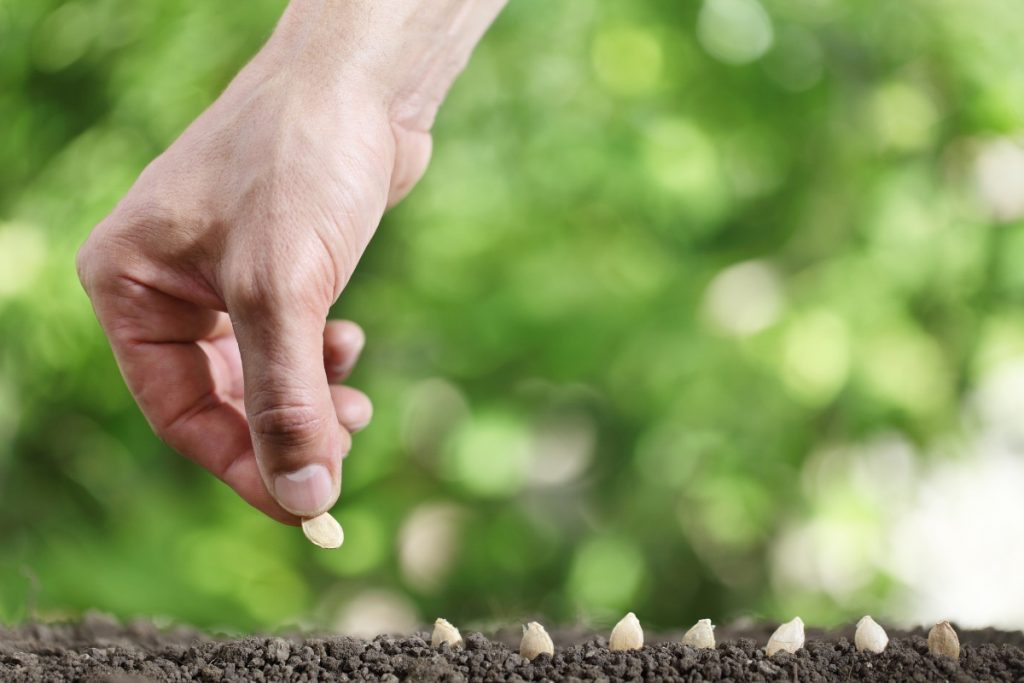
Asexual Propagation
Asexual propagation of plants is also called vegetative propagation. This method uses the vegetative parts of plants like leaves, stems and roots to create new plants.
It’s the best method to use if you want to create new plants with the same characteristics as the parent plant.
This type of propagation uses several techniques, but they are all variations on cutting and dividing a plant to start new ones.
The benefits of using asexual propagation techniques include:
- Creates new plants that are identical to the parent plant
- Faster than growing plants from seeds
Disadvantages include:
- Difficult to produce new varieties
- Some techniques require a specific skillset
- Plants are not as resilient and easily stressed
Asexual Propagation Techniques
There are several asexual plant propagation techniques, and many of them have commercial applications.
The most commonly used techniques include cuttings, division, layering and grafting.

1. Cuttings
When using cuttings as a propagation method, you cut a piece of the parent plant, such as a root, leaf, tip, or stem, and use it to grow a new plant.
There are three types of cuttings named after the plant part being cut or detached.
- Stem cuttings are one of the best ways to propagate ornamental plants and woody shrubs.
- Leaf cuttings work when propagating houseplants, herbaceous annuals and perennials, and woody plants.
- Root cuttings are usually taken from perennials or woody plants while they are dormant in winter.
When to Take Plant Cuttings
You can take and root cuttings from most herbaceous plants anytime that the plants are actively growing.
Some plants actively grow year-round, meaning you can take cuttings whenever you want to create more of them.
Woody plants, however, are not as easy to root, and it is best to take cuttings at specific times in their growth cycle.
There are several different types of woody plant cuttings.
- Softwood cuttings come from fresh, new growth, usually in spring or early summer.
- Greenwood cuttings are taken in early to midsummer from young stems that are starting to mature.
- Semi-hardwood cuttings come from tougher, more mature stems and are taken midsummer to autumn.
- Hardwood cuttings come from mature, woody stems of plants that have shed their leaves and gone dormant in late autumn or winter.
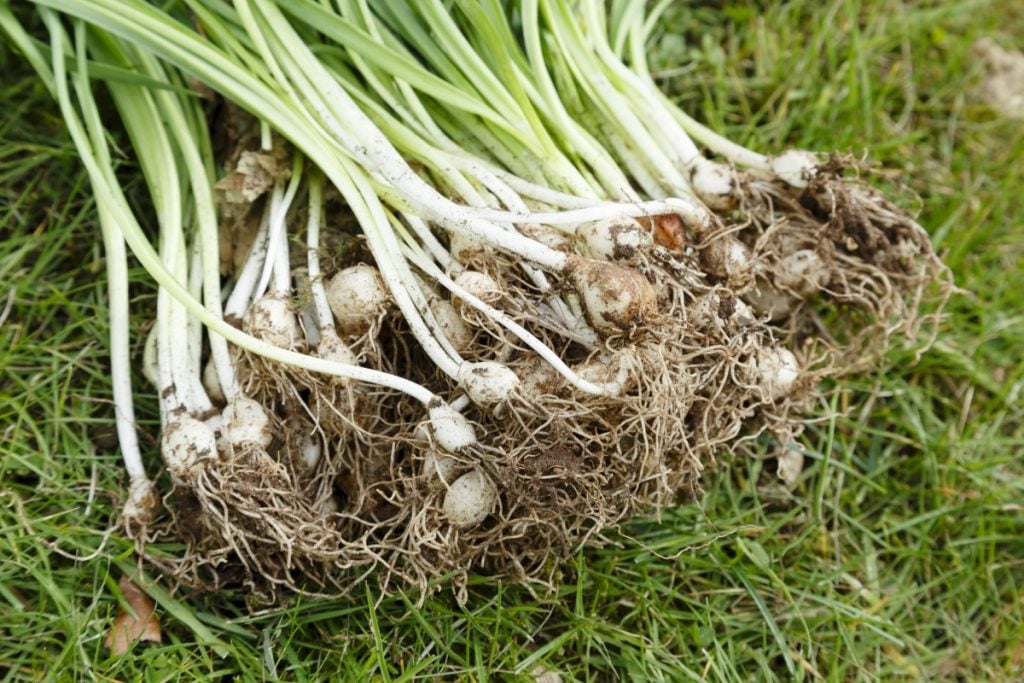
2. Division
The division propagation technique involves breaking up clumps of plants.
It is an effective technique for older perennials and helps the plant by reducing water and nutrient competition.
When using the division technique, you dig up the plant, divide it and replant it in a new location. Each new section should contain bulbs, tubers or roots to be able to thrive.
You generally divide spring and summer-flowering plants in autumn and autumn-flowering varieties in spring.
3. Layering
The layering propagation technique involves rooting part of a parent plant before separating the two.
When simple layering, you bend a branch to the ground, cover it with soil, anchor it in place and allow it to root.
Once roots develop, you cut the branch, and leave the rooted section to grow as a new plant.
You can use air layering for plants whose stems or branches cannot bend to touch the ground.
Air layering involves wounding the branch and surrounding it with moist sphagnum moss wrapped in plastic or foil. Once roots develop, the rooted branch is cut and planted.
People usually use the layering method in early spring or late summer.
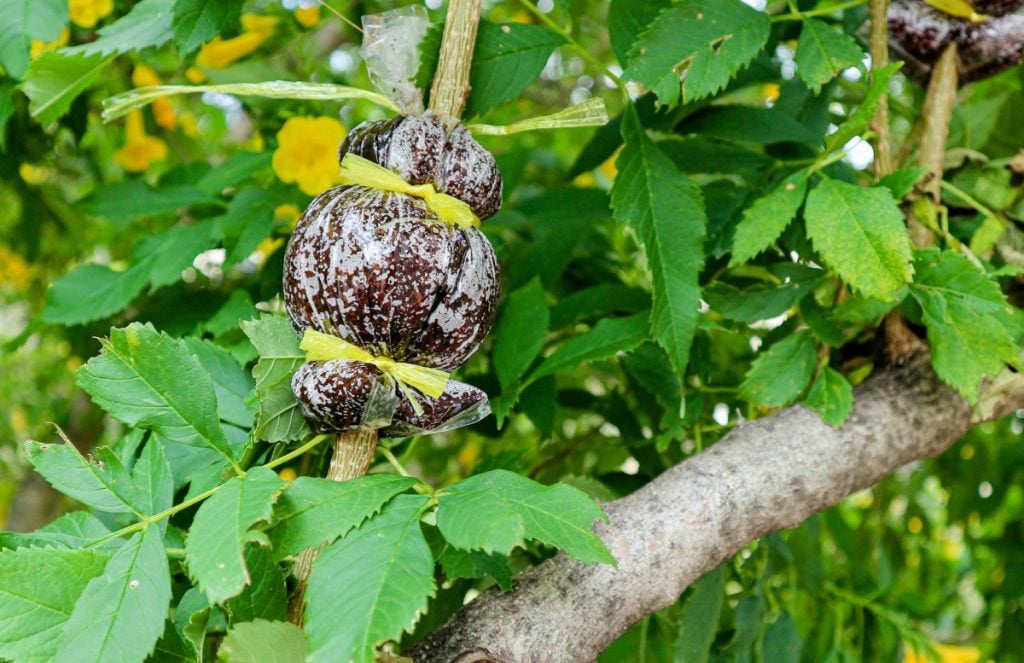
4. Grafting
The grafting propagation technique involves taking a twig cut from one plant and attaching it to the stem of another plant so that they combine and function as one plant.
Grafting is a technique most often used when propagating fruit trees.
It is a complex method of propagation that combines the best qualities of both plants.
What is the best way to propagate plants?
One of the best and easiest ways of propagating plants is by using stem cuttings.
However, when deciding which is the best way to propagate plants, you need to remember the following.
There are several propagation techniques, some plants are easier to propagate than others, and propagation techniques work differently on different types of plants.
The best technique to use will depend on the type of plant you want to propagate, how many new plants you plan on creating and how much time you have available.
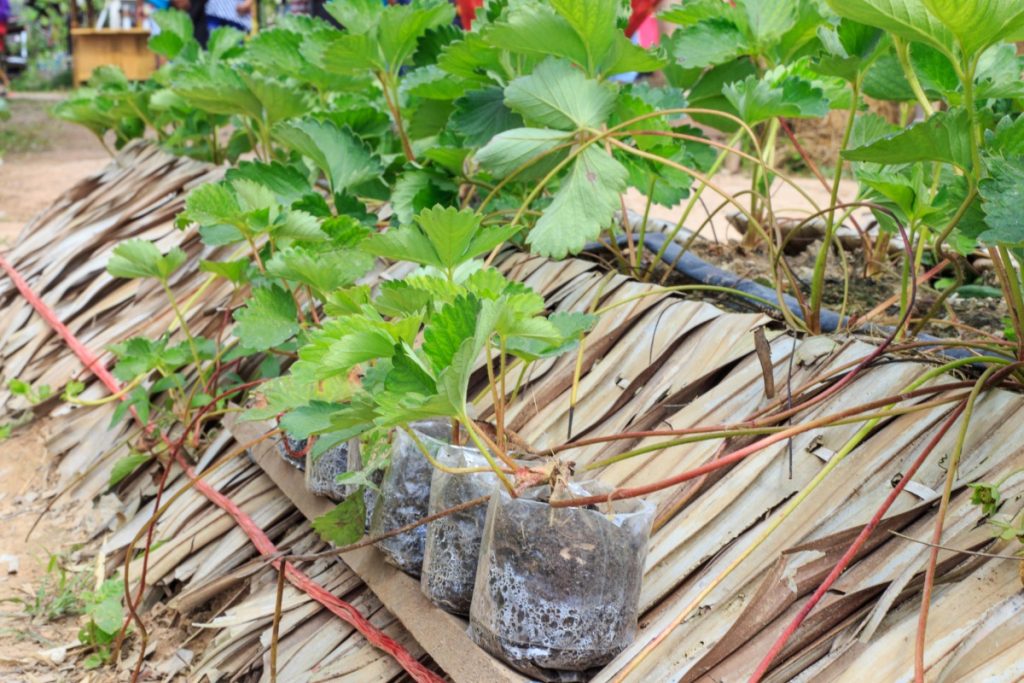
How to Propagate Plants Using Cuttings
Growing plants from cuttings can be a lot of fun. Once you have learned how to propagate plants this way, you will find yourself taking cuttings whenever and wherever you see a plant you would like in your garden.
Taking stem cuttings is the most popular technique for propagating houseplants, ornamental plants and woody shrubs.
Softwood cuttings grow the quickest as the parent plants are actively growing when you take the cuttings.
Here’s how to propagate plants using stem cuttings.
Step 1: Gather Tools and Materials
The first step is to gather the tools and materials required.
Tools
- Razorblade, scissors or secateurs
- Stick or pencil
Materials
- Existing parent plant
- Containers for planting
- Soilless potting mix
- Rooting hormone (optional)
- Plastic bag
Are you one of those people who secretly take cuttings whenever you come across a fascinating plant? If so, remember to keep them moist while you get everything ready to plant them.
Placing the cuttings in a container with wet paper towels or newspaper is an effective way to do this.
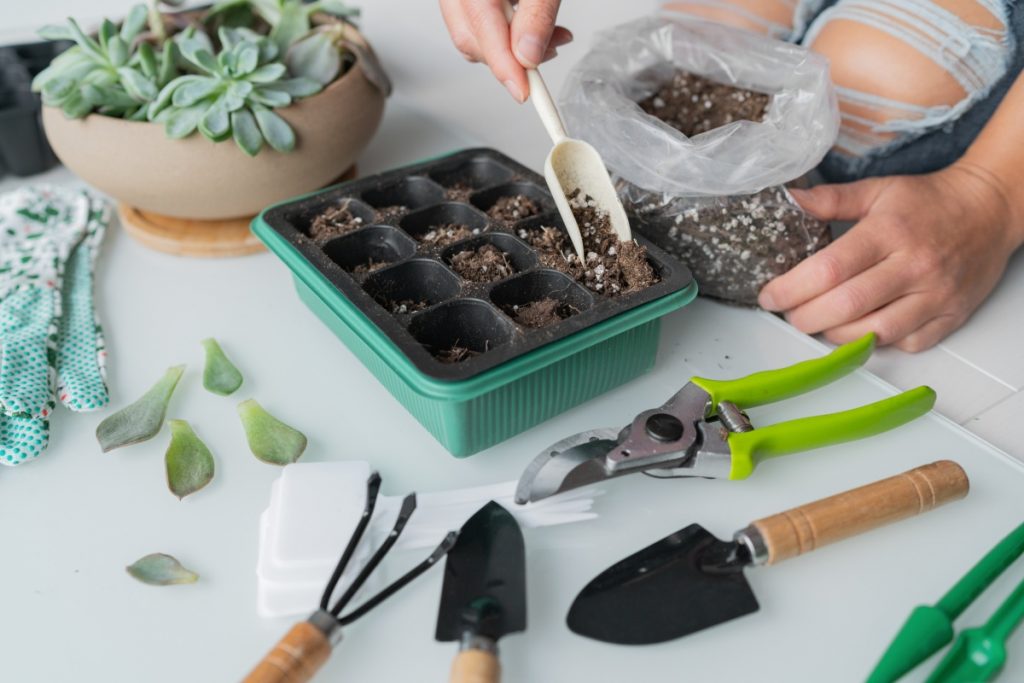
Step 2: Select a Parent Plant
When selecting a parent plant for stem cuttings, look for a healthy plant with lots of new growth. Avoid plants with diseases, insect infestations and drooping or dying foliage.
Ensure the parent plant is large enough for you to take cuttings without harming it.
Step 3: Prepare Your Rooting Container
Fill a small, clean 4 to 6-inch (10 to 15 cm) deep pot or container with moist vermiculite, perlite or another soilless potting mix to hold the stem cutting while it is rooting.
Soilless potting mixes are better for propagating cuttings as they drain better than ordinary garden soil and are less likely to contain substances that may kill the cutting.
Many cuttings will also root in plain water and can be placed in a container with water while rooting.
However, it can be harder to transplant water-rooted cuttings into soil than those propagated in soilless potting mixes.
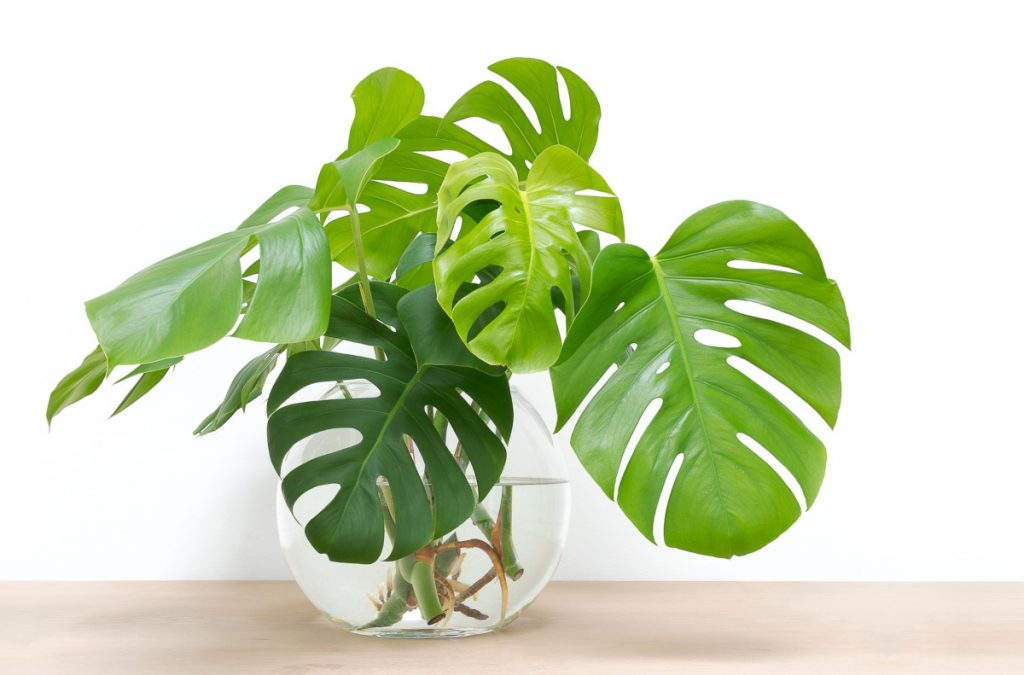
What Plants Can Be Rooted in Water?
Many plants and indoor houseplants root easily in water. Examples of these are spider plants, pothos vines, ivies, begonias, polka-dot-plants, coleus and philodendrons.
Other plants, however, including many woody plants, do not root well in water and often rot before rooting.
Step 4: Take Cuttings
Choose newer, green stems for your cuttings as these are easier to root than woody stems.
Look for stems with nodes or bumps where leaf or flower buds will emerge as this is where roots will form.
With a sharp pair of scissors or a knife, make a clean cut just below a node at a 45-degree angle to maximize the rooting area.
The cutting should be around 3 to 6 inches (8 to 15 cm) long and include the tip of the stem, at least two sets of leaves and one node.
Remember to take more cuttings than you think you’ll need as they may not all root.
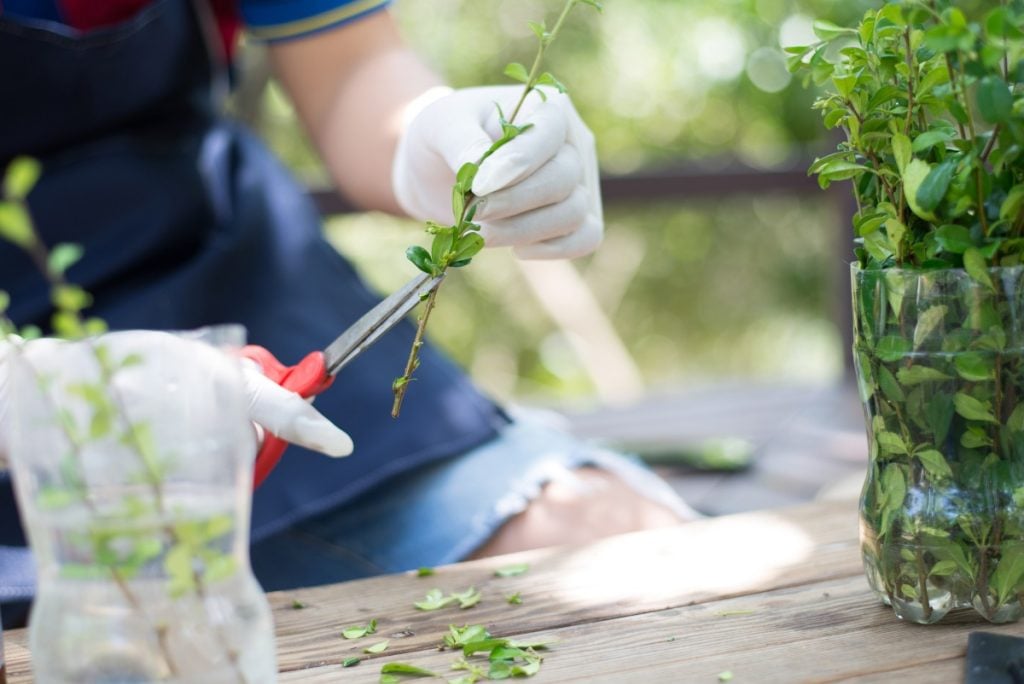
Step 5: Prepare Your Cuttings
Now that you have your stem cutting, it is time to get it ready for rooting.
How do You Start a Plant From a Cutting?
First, you will need to remove the leaves from the bottom node on your cutting. You can also remove other excess leaves and only keep two or three leaves.
Although the cutting needs some leaves for photosynthesis, too many will consume energy and slow root creation.
Some plants root easily but, with others, you may decide to use a rooting hormone to stimulate growth.
If you choose to go this route, apply a powdered or gel rooting hormone to the trimmed end of the cutting and to the area where you removed the leaves.
If you use a powdered root hormone, it helps to dip the stem in water before rolling it in the powder.
Now your cutting is ready to be planted.
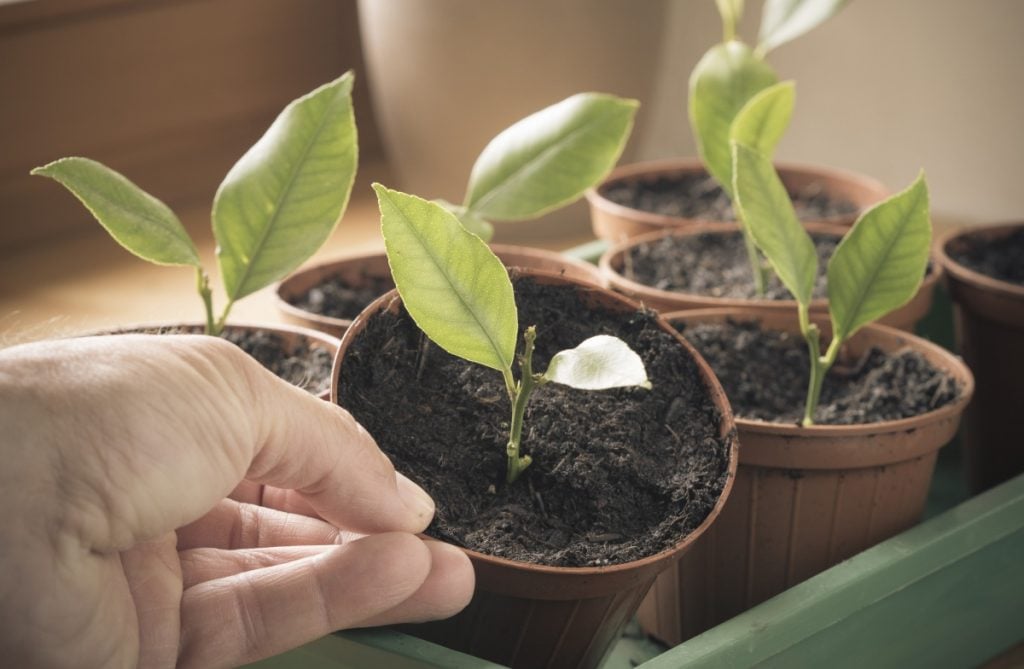
Step 6: Plant Your Cuttings
Use your pencil or stick to poke a planting hole in the soilless potting mix in your container.
Ensure the hole is slightly larger than the stem cutting to prevent the rooting hormone from being rubbed off when you place the cutting in the hole.
Now place the cutting into the hole and gently press the soil around it to hold it upright.
You can put more than one cutting into a container, but space them so that the leaves do not touch.
When propagating in water, once you have removed the leaves, you can place your cuttings in a container with water.
Make sure that none of the leaves are in the water.
Step 7: Look After Your Cuttings
Place your newly planted cuttings in a warm spot with indirect light and keep them moist. Many cuttings will also benefit from increased humidity.
Placing your container in a clear plastic bag is a simple way to increase humidity and creates a greenhouse effect.
Do not let the plastic touch the cuttings, and don’t seal the bag completely, as your cuttings need some airflow.
You can also use clear plastic jars, milk cartons or plastic soda bottles to cover your cuttings and keep them humid.

Step 8: Transplant the Cuttings
It generally takes cutting 3 to 4 weeks to grow roots, but some plants take longer.
You will know your cuttings have rooted when you see new growth or if you tug gently on the stem and feel a slight resistance.
When you are sure they are well rooted, usually between 4 to 8 weeks from being cut and showing healthy new growth. You can transplant the cuttings into individual containers filled with potting soil or directly into your garden.
If you live in a place with extreme climatic conditions, it is a good idea to transplant them into containers and acclimatize them before planting them in the garden.
Gradually exposing them to more sunlight and extreme temperatures will reduce the shock when you plant them in the garden.
You can do this by moving them from indirect light to partial sun and then full sun over a week.
What Are the Easiest Plants to Propagate?
In general, cuttings taken from green or softwoods are easier to propagate than hardwood cuttings.
These five plants are some of the easiest to propagate and great fun for beginners.
1. Pothos Plants
Arguably, the easiest houseplant to grow, pothos (Epipremnum aureum), comes in various foliage colors and patterns.
Great for beginners, pothos are forgiving plants that are virtually disease and pest-free and tolerant of low light conditions.
Pothos plants are also one of the top houseplants for improving indoor air quality.
They have long stems with aerial roots that adhere to surfaces and look good in hanging baskets and plant stands.
How to Propagate Pothos Plants
It is easy to propagate pothos plants using stem cuttings rooted in a potting mixture or water.
This article on How to Root Pothos Cuttings has detailed instructions and lots of pictures to help you.
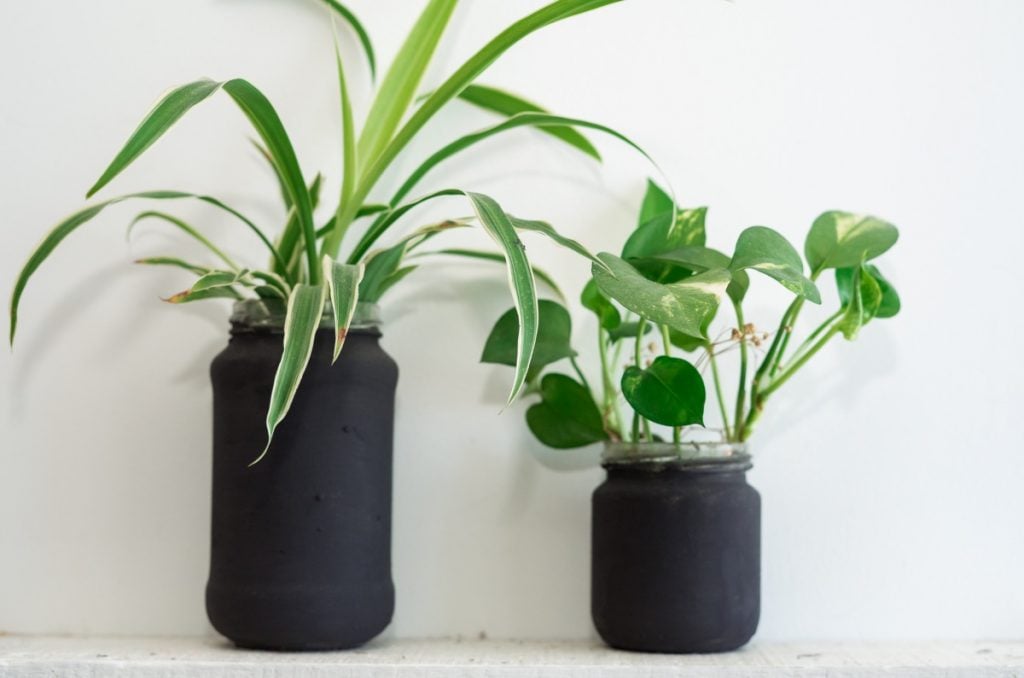
2. Spider Plants
A spider plant (Chlorophytum comosum) is a perennial,clump-forming, herbaceous plant with narrow solid green or variegated leaves.
They have many names but get their common name from the small plantlets they produce that resemble spiders.
Spider plants are arguably the most popular and well-known of all houseplants and look wonderful in hanging baskets.
They are great for beginners as they are both easy to grow and propagate, and will thrive in almost any conditions.
How to Propagate Spider Plants
A spider plant’s long hanging stems and plantlets make it one of the easiest plants to propagate because it is easy to see where to cut the stem.
Propagating them is as simple as cutting the stems and rooting the spiderettes.
Spider plants can be propagated using the layering technique and cutting the stems after the plantlets have rooted or by taking cuttings and rooting the spiderettes in pots or water.
This article has step-by-step instructions on how to propagate spider plants using cuttings.
3. Jade Plants
The jade plant (Crassula ovata) is another popular, easy-to-care-for houseplant. It is a succulent plant with fleshy, oval-shaped leaves and thick, woody stems.
Also known as the lucky plant or money plant, the jade plant is said to bring good luck, requires little water and can survive in most indoor conditions.
How to Propagate Jade Plants
It is easy to propagate jade plants using both leaf and stem cuttings rooted in pots or water.
Propagating Jade plants in a succulent potting soil mix is the most common method used.
Get busy gardening has more information on how to propagate jade plants in pots. But, growing jade plants in water can also be a lot of fun. Learn how to do this here.
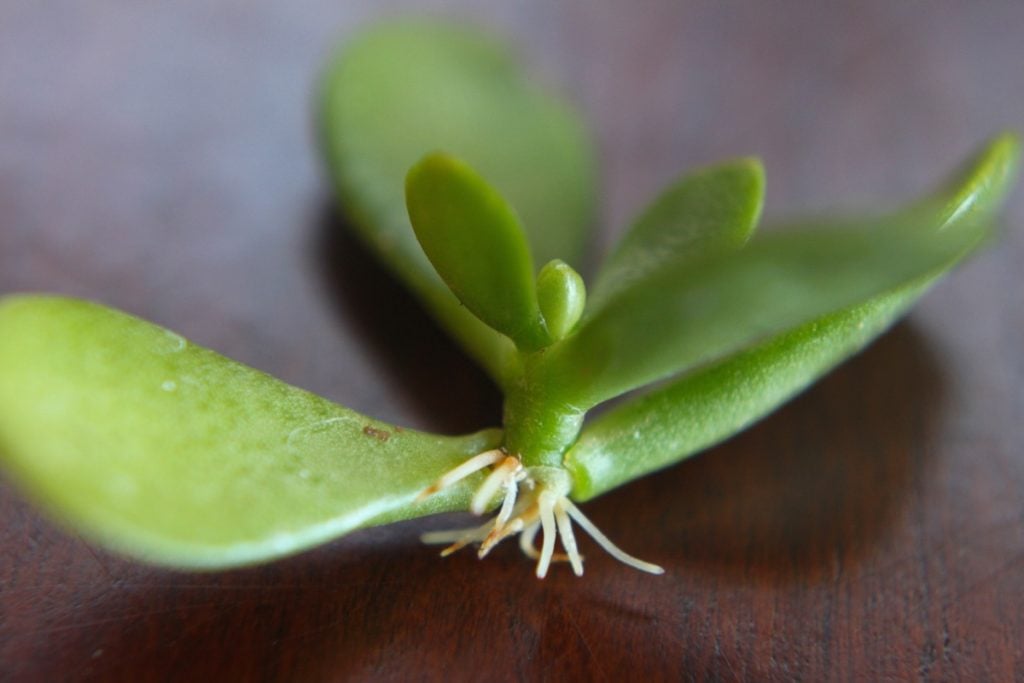
4. Aloe Plants
Aloes are shrubby, succulent plants in the family Asphodelaceae. There are hundreds of species, and people cultivate several of them as ornamentals.
They also help clean the air, and the well-known aloe vera is a popular potted plant that has medicinal properties.
Aloes are great for beginners because they thrive on neglect and are easy and fun to propagate.
How to Propagate Aloe Plants
There are three ways to propagate aloes, using seeds, leaf cuttings or division.
Division is the easiest and most successful method and involves separating the pups or offshoots from the mother plant and then rooting them.
Use these easy step-by-step instructions to propagate aloe plants.
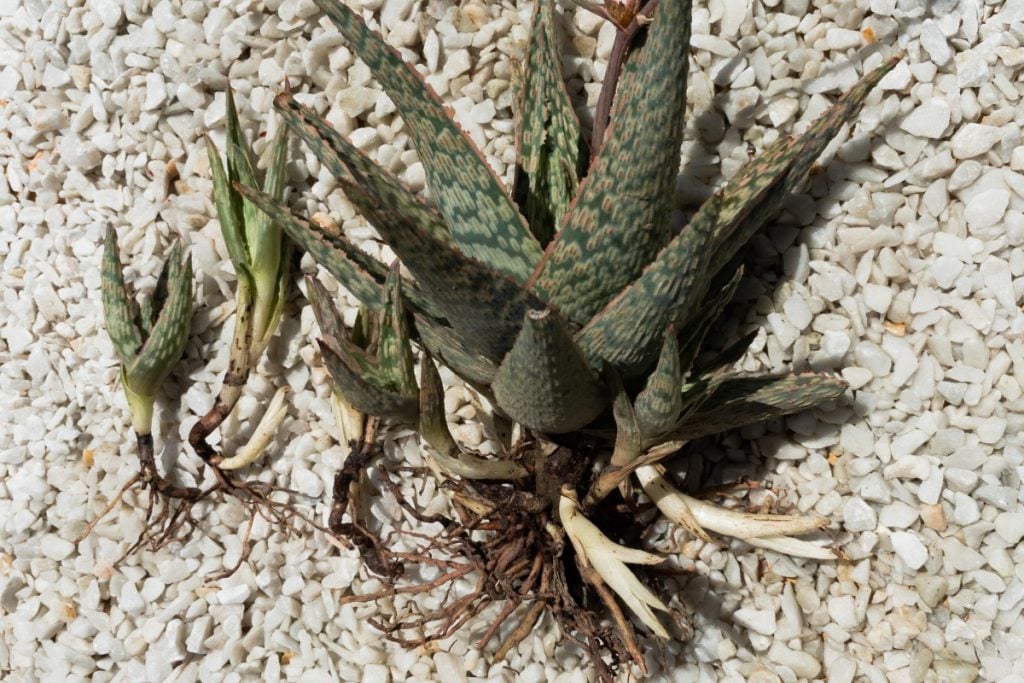
5. Air plants
Air plants (Tillandsia spp.) are epiphytes, which means that they grow on other plants, usually tree branches.
There are hundreds of species and varieties of air plants, many of which have beautiful flowers.
Air plants make popular houseplants as they don’t need any soil and are also easy to look after.
How to Propagate Air Plants
You can propagate air plants from seeds but dividing or separating the pups or offshoots from the parent plant is the easiest and quickest way to grow more air plants.
Learn how to propagate air plants in this article from Air Plant Forest.
What Are the Most Difficult Plants to Propagate?
Not all plants are easy to propagate, and some plants are only successfully propagated using one specific propagation method.
Variegated plants can be some of the most challenging ornamental plants to propagate as they can potentially revert to a solid color.
Sensitive plants that require special growing conditions are also difficult to propagate. However with knowledge and patience it is possible to propagate all plants.
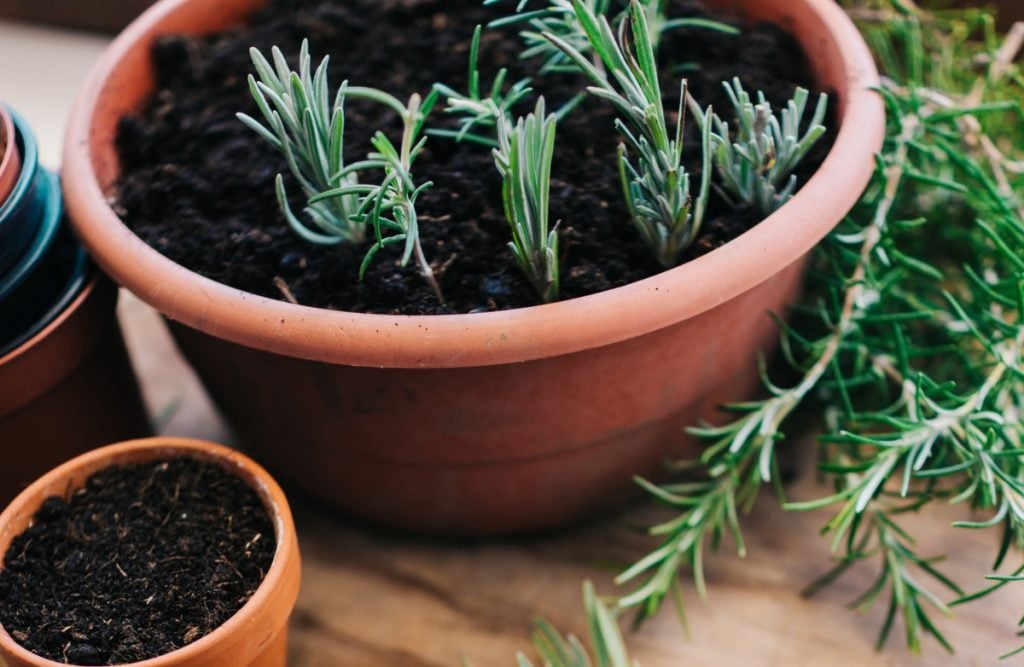
How is Plant Propagation Used in Permaculture?
One of the requirements of a permaculture garden, orchard or forest is diversity, but achieving this can be an expensive undertaking. Unless, of course, you propagate your own plants.
Learning plant cultivation and propagation skills will allow you to create diversity in your permaculture farm in the quickest, most cost-effective and ethical way.
Knowledge and skills in seed saving, layering, division, softwood and hardwood cuttings, grafting, and plant breeding are all essential if you want to get the most out of your food ecosystem.
Softwood, or green tip cuttings, are by far the most popular form of propagation. Cuttings are frequently used in permaculture to propagate herbs, vegetables, annual and perennial flowers.
Permaculture practitioners commonly use the grafting technique to create hardy, productive fruit trees.
Growing your own rootstock and grafting the fruit trees you desire is an excellent way to save money and time when creating a permaculture orchard.
Propagation using cuttings also works well when you want to grow fruit tree guilds or a food forest but have a small budget for plants.
Cuttings help to grow a lot of the same plants quickly.
If you have a whole food forest understory to populate, then growing multiple pots of your favorite perennial plants, all propagated through cuttings, can do the job fast.
Stem cuttings is a method of propagation that is especially beneficial if you’d like to grow perennial crops for money.
Taking cuttings also allows you to clone local or unique plant varieties that are hard to find.
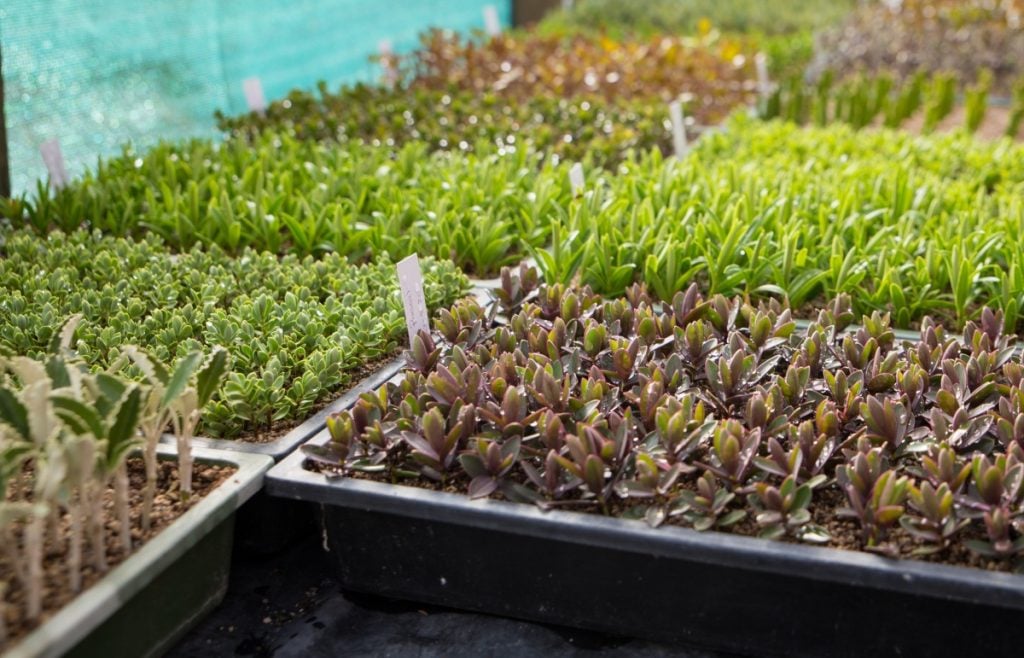
Final Thoughts
Learning how to propagate plants using cuttings can be fun and rewarding. It is a cost-effective way to create more of your favorite plants.
In permaculture, gardeners and farmers use propagation techniques to create unique plants and increase diversity.
You can even take it a step further and propagate large quantities of ornamental or edible plants to sell and generate income.
Learn more in our articles on how to start a permaculture garden and the most profitable crops to grow, many of which can be propagated using cuttings.
